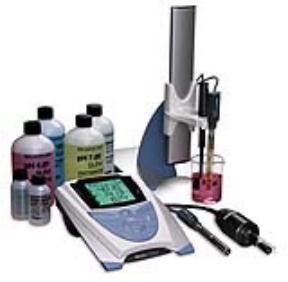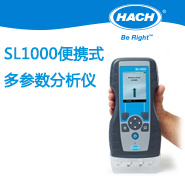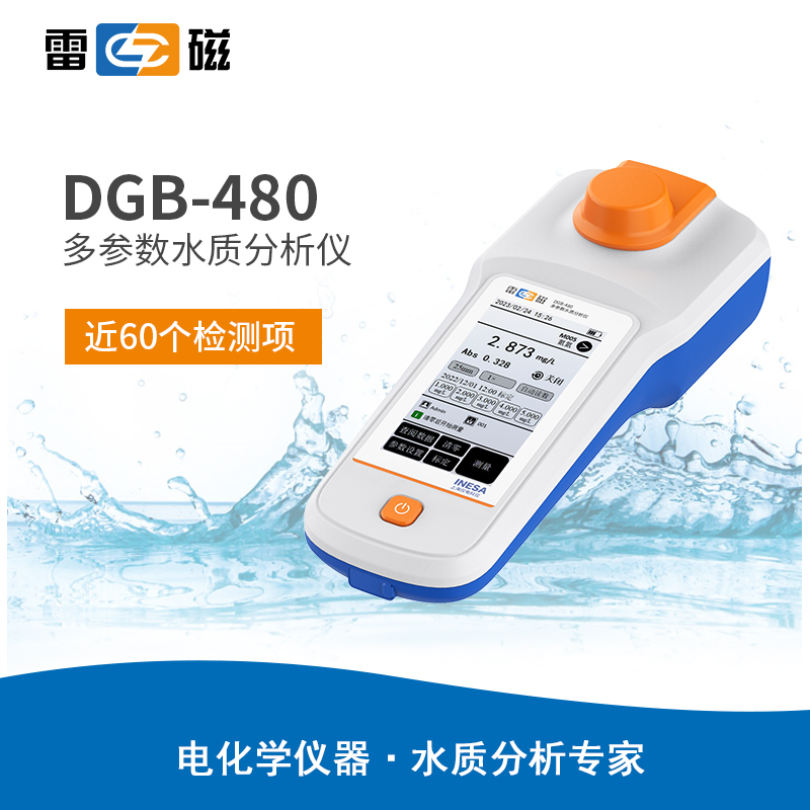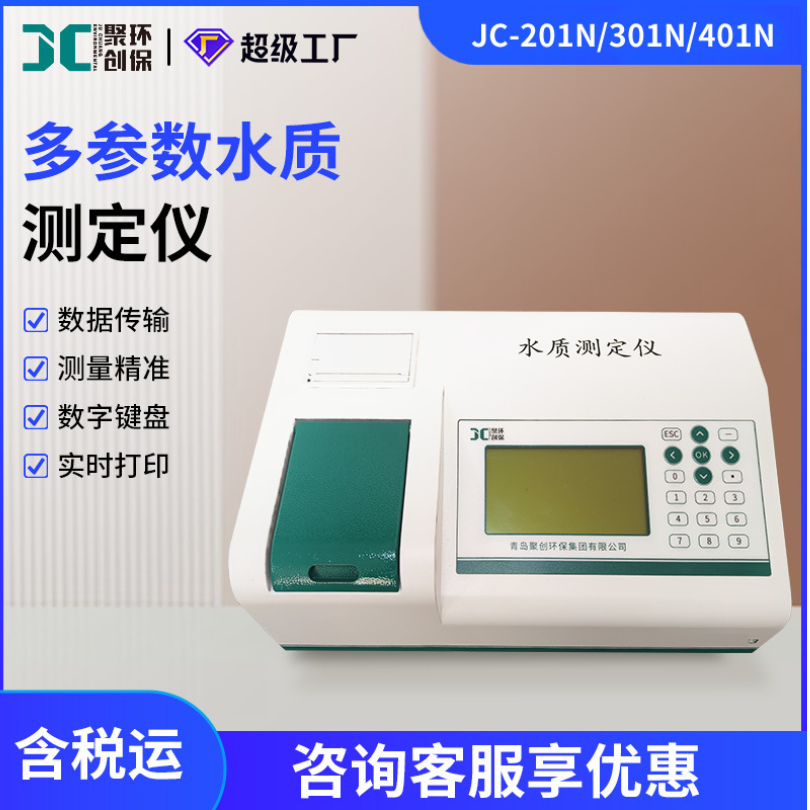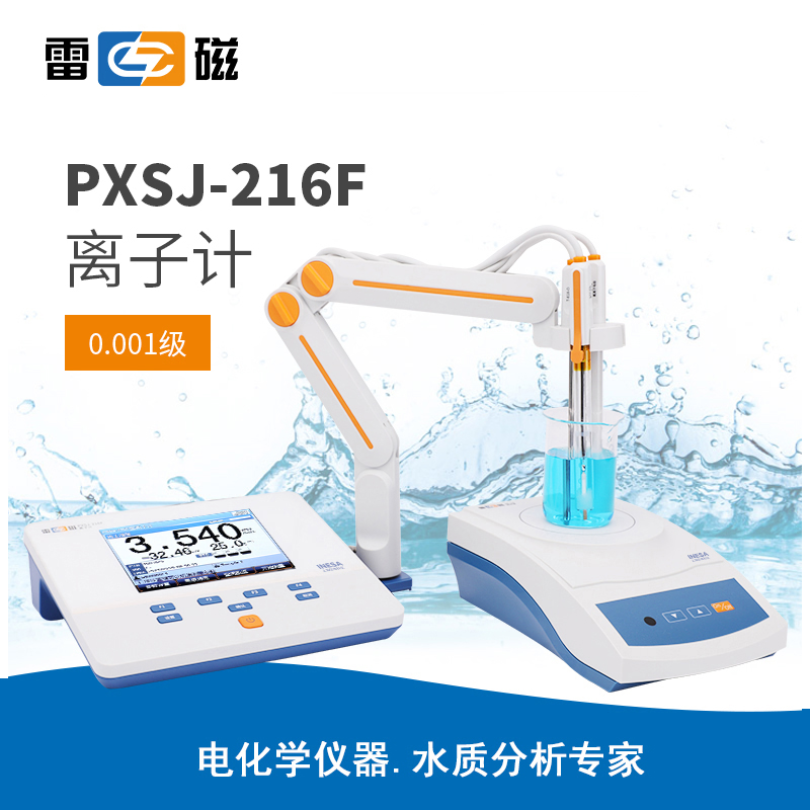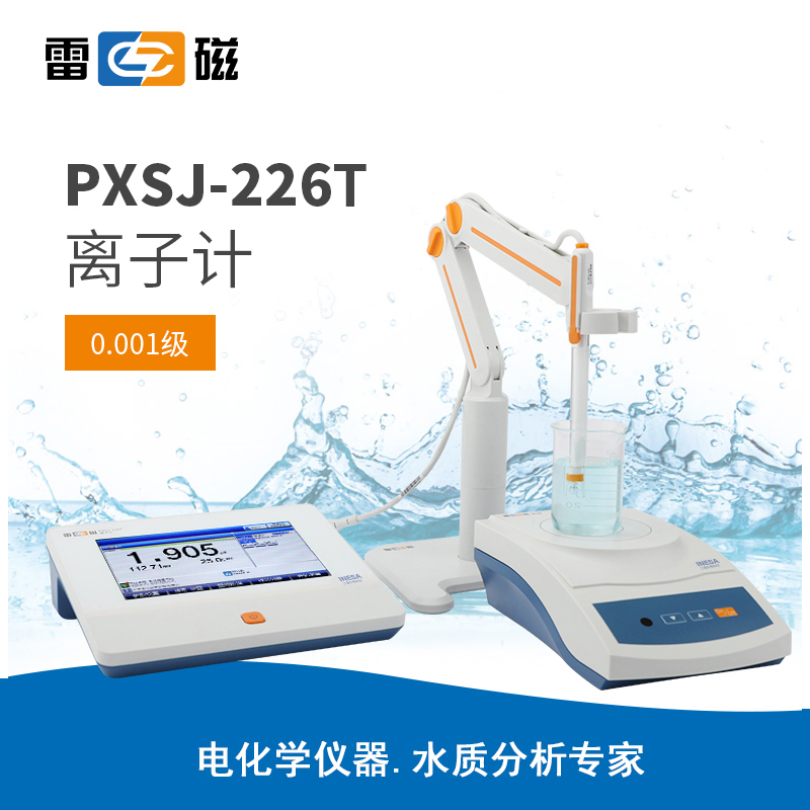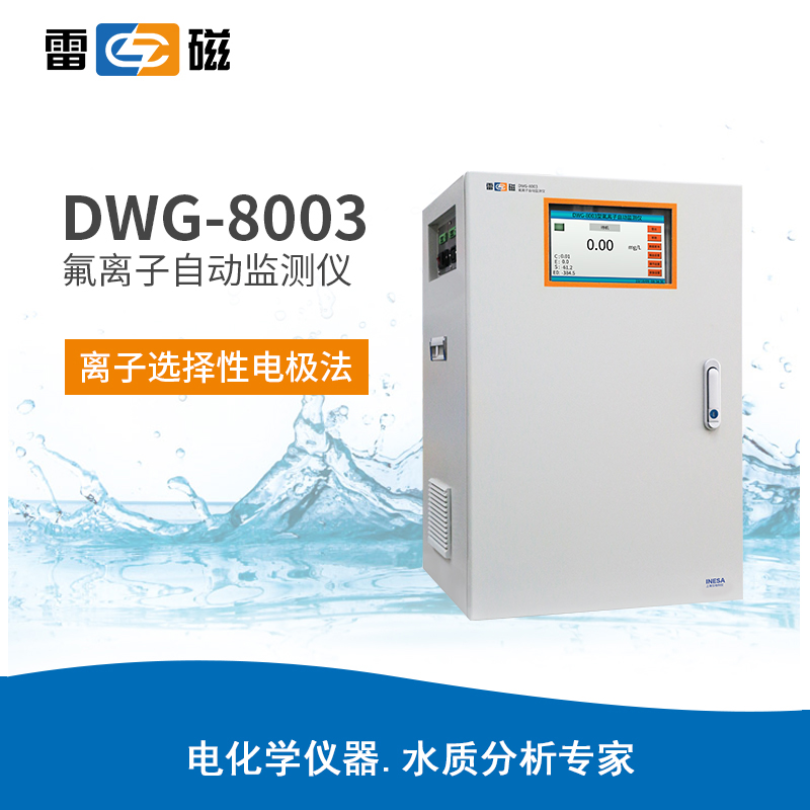方案详情
文
本文章详细介绍了漱口水中氟的测定,包括校准液、水样的准备,校准和测量过程,以及电极和仪表的维护等内容
方案详情

Fluoride inMouthwashFluoride inMouthwash Fluoride inMouthwash Calibration and Analysis 1. Allow all the standards and the samples to attain room temperature for precise measurements since themeasurement is temperature sensitive. 2.Calibrate the meter using the 100 ppm (0.01%) followed by the 950 ppm (0.950%) standard,stirringthe standards at a uniform rate. 3. Place the electrode temperature probe and stirrer into the beaker with the 100 ppm (0.010%) standardsuch that the electrode tip is fully immersed in the solution. The stirrer should be positioned slightlybelow the tip of the electrode. Press the STIRRER key on the meter to turn the stirrer on. Press theCALIBRATE key. 4 Wait for stable reading (1-2 minutes). Enter standard value of“0.010”using UP and DOWN arrowkeys and the DECIMAL/DIGIT key. 5. Press the CALIBRATE key to accept 0.010 % standard and press the STIRRER key to turn thestirrer off. .6 Rinse electrode temperature probe and stirrer thoroughly with deionized water. Gently remove excesssolution from the outer sleeve of the electrode by dabbing with a clean paper tissue. Do not wipe orrub the sensing element. 7.Place the probes and stirrer into the beaker with the 950 ppm (0.950%) standard such that theelectrode tip is fully immersed in the solution. The stirrer should be positioned slightly below the tipof the electrode. Press the STIRRER key on the meter to turn the stirrer on. 8. Wait for stable reading (1-2 minutes). Enter standard value of“0.950”using UP and DOWN arrowkeys and the DECIMAL/DIGIT key. 9.Press the MEASURE key to accept 0.950 % standard and to move to the measure mode of the meter.Press the STIRRER key to turn the stirrer off. 10. Rinse electrode temperature probe and stirrer thoroughly with deionized water. Gently remove excesssolution from the outer sleeve of the electrode by dabbing with a clean paper tissue. Do not wipe orrub the sensing element of the electrode. 11. Place the probes and stirrer in a prepared sample with the electrode tip fully immersed in the solution.Press the MEASURE key on the meter; the stirrer will turn on. The ISE:% icon will flash as themeasurement is being made. The ISE:% icon will become solid and the display value will freeze whena stable reading is achieved. This value is logged and printed automatically and the stirrer turns offautomatically. 12. Repeat steps 10 and 11 for additional samples. Upon completion or samples, rinse electrode withdeionized water and store the electrode according to instructions in the Electrode Storage section ofthis method note. Introduction Fluoride is incorporated in oral health products in numerous forms, including sodium fluoride, sodiummonofluorophosphate, amine fluoride and stannous fluoride. This method provides rapid, uncomplicateddeterminations for fluoride in the form of sodium fluoride in whitening fluoride mouthwash. Thisprocedure eliminates interferences associated with the presence of color and solids. The direct measurementof the fluoride ion with the fluoride ion selective electrode is a well-established technique that is frequentlyused as the standard method of analysis. Recommended Equipment Cat. No. ISE Application Package (includes all items with a Cat. No.) 1010162 1. 4-Star benchtop pH/ISE meter 1115000 2. Orion ionplus° fluoride electrode 9609BNWP3. Orion benchtop stirrer (or magnetic stir plate and bar) 0960194. Orion ATC probe 927007MD 5. Orion electrode stand 1110001 6.100 mL volumetric flask100 mL beakers8.50 mL graduated cylinder.10 mL pipettes 2. Fluoride Standard,0.1 M NaF 940906 Reference Filling Solution, Optimum Results"" A 900061 3. TISAB II 940909 4. Deionized water 4. Deionized water Calibration Standard Preparation 1. Prepare a 950 ppm (0.950 % weight/volume) standard by pipetting 50 mL of the 0.1 M fluoride standard into a 100 mL volumetric flask. Dilute to the mark with deionized water. Mix well. 2.Using a graduated cylinder, transfer 25 mL of the 950 ppm (0.950 % w/v) standard into a beaker.Using a graduated cylinder, add 25 mLofTISAB II. ).Using a graduated cylinder, transfer 25 mL of the 100 ppm (0.010% w/v) standard into a beaker.Using a graduated cylinder, add 25 mL ofTISAB II. Sample Preparation 1 Using a graduated cylinder, measure 25 mL of the sample into a beaker. Using a graduated cylinder, add 25 ml of TISAB II. 2 Repeat this procedure for additional measurements. Results Five aliquots of the whitening fluoride mouthwash were measured and the results demonstrate good repeatability. The matrix spike sample was analyzed to determine the effect of the sample matrix on accuracy. The matrixspike recovery was 92.6%. Fluoride Mouthwash % w/v Fluoride Sample #1: 0.280 Sample #2: 0.282 Sample # 3: 0.285 Sample #4: 0.284 Sample # 5: 0.283 Mean: 0.283 Standard Deviation: 0.002 %CV: 0.68 Electrode Storage For brief storage periods between sample measurements, store the electrode in the 100 ppm (0.010% w/v)fluoride standard. The filling solution in the fluoride electrode should not be allowed to evaporate, whichcauses crystallization. For longer storage periods, refer to the electrode instruction manuals. Fluorideelectrodes, whose response may become sluggish with time, can often be restored to working order by brushingthe sensing element on the flat tip of the electrode with fluoride toothpaste and a soft brush. Equipment Setup Electrode Setup 1. Remove the rubber cap covering the electrode tip. Fill the outer chamber with Optimum Results " A filling solution. Lift the filling solution bottle's spout to a vertical position. 4. Insert the spout into the filling hole in the outer sleeve of the electrode and add a small amount of fillingsolution to the chamber. Then tip the electrode to moisten the o-ring at the top and return electrode to avertical position. 5. Holding the electrode by the barrel with one hand, use the thumb to push down on the electrode cap,allowing a few drops of filling solution to drain wetting the inner cone. 6 Release the electrode cap allowing the electrode’s outer sleeve to return to its original position immediately,check to see if the o-ring is moist and repeat steps 4-6 until the outer sleeve has returned to its originalposition. Add more filling solution until the amount of filling solution within the electrode body is levelwith the bottom edge of the electrode filling hole. For initial meter setup, follow the steps on the Quick Reference Guide that is attached to the meter itself. TheQuick Start Guide included with each meter also contains a layout of the meter keypad for reference. Thewords in all capital letters such as POWER indicate a key on the meter, and words in quotations such as “Unit"indicate information on the meter display. 1 Connect the electrode to the meter. 2. Connect the temperature probe to the meter. 3. Press the POWER key on the meter to turn the meter on. 4. Note that the arrow on the left of the screen indicates the active line. If the top line is not active, press theLINE SELECTION key to change the selected line to the top line. 5. Press the SETUP key. Use the UP or DOWN keys to enter ISE setup. Press the LINE SELECTIONkey to select the bottom line. Press the UP or DOWN arrow keys to select“3”for “rES”which is anabbreviation for resolution or number of significant digits. Press the LINE SELECTION key to acceptsetting. 6 Press the LINE SELECTION key to select the middle line, and press the DOWN arrow key to select“nL In”which is an abbreviation for non-linear blank correction. 7.Press the LINE SELECTION key to select the bottom line. Press UP or DOWN arrow keys to select “off’for “nL ln". Press the LINE SELECTION key to accept setting. 8 Press the LINE SELECTION key to select middle line, and press the DOWN arrow key to select “rAng”which is an abbreviation for measurement range. 9. Press the LINE SELECTION key to select the bottom line. Press the UP or DOWN arrow keys to selectKey“HigH”for "rAng”. Press the LINE SELECTION key to accept setting. 10. Press the LINE SELECTION key to select middle line, and press the DOWN arrow key to select “Unit". 11. Press the LINE SELECTION key to select the bottom line. Press the UP or DOWN arrow keys to select“PEr”% for“Unit". Press the LINE SELECTION key to accept setting. 12. Press the MEASURE key to return to the measurement mode. If all steps were followed correctly the meter display will show three digits in the top line and“ISE: %”to theright of the top line. The meter and electrode are now ready for calibration. Note: The Orion Benchtop Stirrer must be turned on in General Instrument setup before analysis,please see the Quickstart guide for instructions. www.thermo.com of of ofof
确定
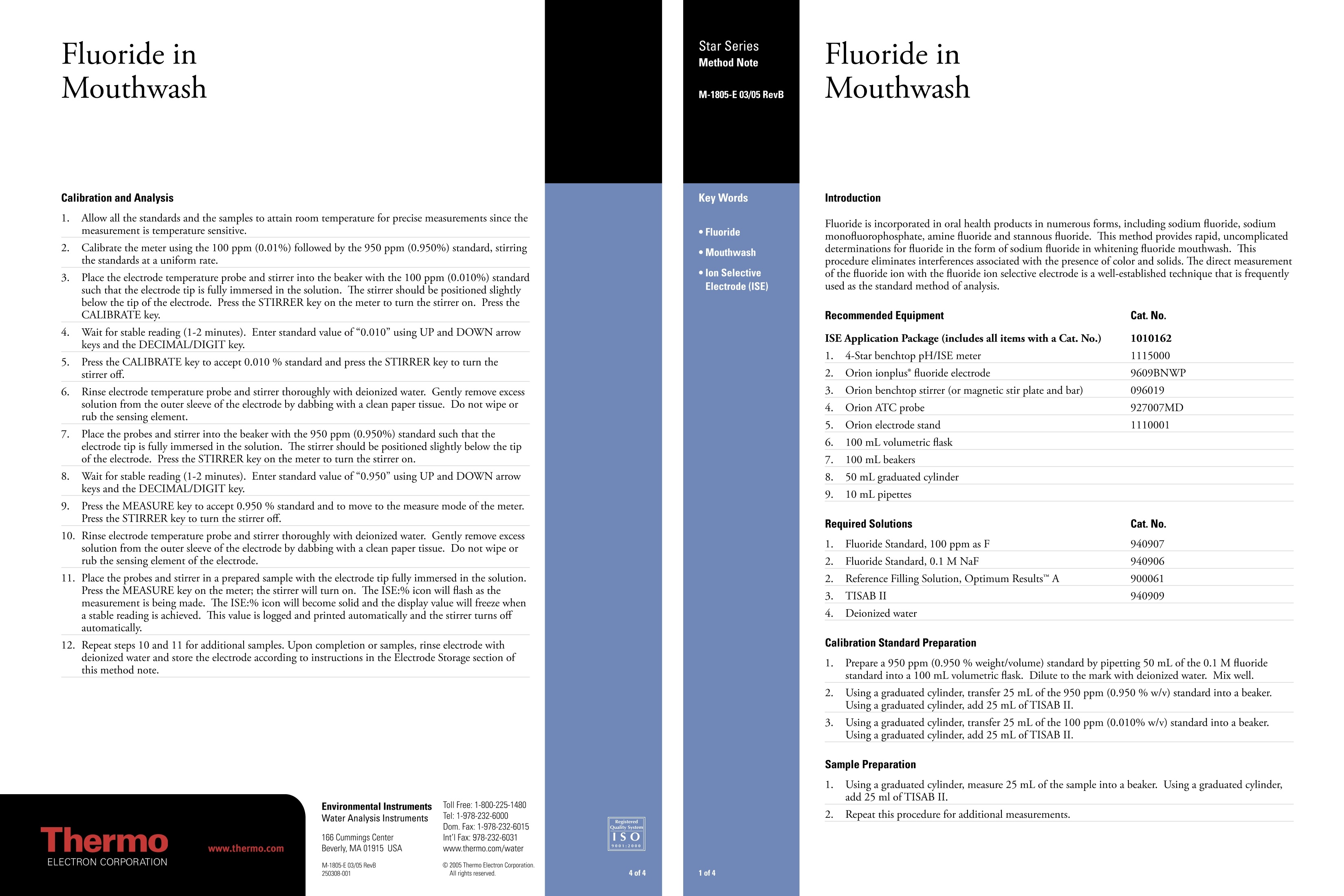

还剩1页未读,是否继续阅读?
赛默飞中国实验室产品事业部为您提供《漱口水中氟的测定》,该方案主要用于生活用品中--检测,参考标准--,《漱口水中氟的测定》用到的仪器有台式pH/ORP/ISE/溶解氧/电导率测量仪、Orion 4-Star台式(便携式)pH/离子浓度测量仪
推荐专场
相关方案
更多

